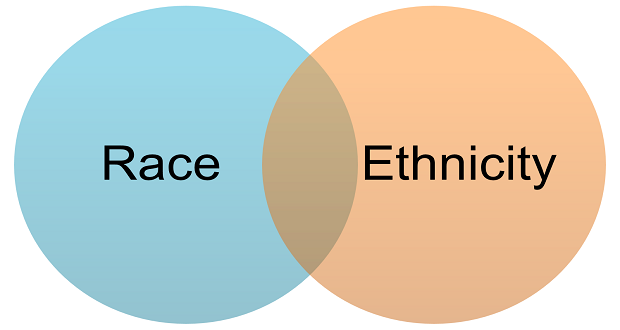Tension headache in a 13 years old adolescent
Tension headache in a 13 years old adolescent
(Tension headache in a 13 years old adolescent) Discussion Topic: Pediatric Soap Note
Requirements
The discussion must address the topic
Rationale must be provided mainly in the differential diagnosis
Use at least 600 words (no included 1st page or references in the 600 words)
May use examples from your nursing practice
Formatted and cited in current APA 7
Use 3 academic sources, not older than 5 years. Not Websites are allowed.
Plagiarism is NOT permitted.
I have attached the SOAP note template, a SOAP note sample, and the rubric.

Pediatric SOAP Note: Tension Headache in a 13-Year-Old Adolescent
Subjective:
Chief Complaint:
The patient, a 13-year-old male, presents with complaints of frequent headaches over the past month.
History of Present Illness:
The patient describes the headache as a dull, pressing sensation around the forehead and temples. The headaches occur 3-4 times per week and last for several hours. The intensity is moderate, rated 5-6 on a 10-point scale. The headaches are not associated with nausea, vomiting, or visual disturbances. The patient reports increased stress from schoolwork and poor sleep patterns.
Past Medical History:
No significant medical history. No history of head trauma or migraines.
Family History:
Father has a history of migraines. No other relevant family history.
Social History:
The patient is a middle school student. He denies alcohol, tobacco, or drug use. He reports an increased workload and upcoming exams contributing to stress.
Review of Systems:
Denies fever, chills, weight loss, vision changes, photophobia, phonophobia, dizziness, weakness, numbness, or any other neurological symptoms.
Objective:
Vital Signs:
- Blood Pressure: 110/70 mmHg
- Heart Rate: 75 bpm
- Respiratory Rate: 18 breaths per minute
- Temperature: 98.6°F
- Oxygen Saturation: 98% on room air
General:
The patient appears well-nourished and in no acute distress.
Head:
Normocephalic, atraumatic.
Eyes:
Pupils equal, round, and reactive to light. Extraocular movements intact. No conjunctival injection or papilledema.
Ears, Nose, Throat:
No signs of infection or inflammation. Tympanic membranes clear.
Neck:
Supple, no lymphadenopathy or thyromegaly.
Neurological:
Alert and oriented to person, place, and time. Cranial nerves II-XII intact. Strength 5/5 in all extremities. Sensation intact. No signs of meningismus or focal neurological deficits.
Assessment:
Primary Diagnosis:
Tension-type headache (G44.209)
Differential Diagnoses:
- Migraine Headache:
Although the patient’s father has a history of migraines, the patient’s symptoms lack the characteristic throbbing pain, nausea, and sensitivity to light and sound associated with migraines. The absence of aura and the bilateral nature of the pain also make this less likely. - Cluster Headache:
Cluster headaches are typically unilateral and present with severe, sharp pain around one eye, often accompanied by autonomic symptoms like tearing or nasal congestion. The patient’s description does not match these criteria, making this diagnosis unlikely. - Sinusitis:
Sinusitis often presents with facial pain, pressure, and nasal discharge. However, the patient denies nasal congestion or discharge, and the physical exam did not reveal any signs of sinus tenderness or inflammation. - Refractive Error:
Visual disturbances and eye strain can lead to headaches. While the patient denies vision changes, a comprehensive eye exam may still be warranted to rule out refractive error as a contributing factor. - Intracranial Mass:
Severe, persistent headaches accompanied by neurological deficits raise concern for an intracranial mass. However, the patient’s normal neurological exam and lack of severe symptoms make this diagnosis less likely at this time.
Plan:
- Education and Reassurance:
Educate the patient and parents about tension headaches and their association with stress and poor sleep. - Stress Management:
Recommend relaxation techniques, regular physical activity, and a balanced schedule to manage school-related stress. - Sleep Hygiene:
Advise the patient on maintaining a regular sleep routine, creating a restful environment, and limiting screen time before bed. - Analgesics:
Suggest over-the-counter acetaminophen or ibuprofen for headache relief, as needed, while avoiding overuse to prevent rebound headaches. - Follow-Up:
Schedule a follow-up visit in four weeks to assess the effectiveness of interventions and re-evaluate the patient if headaches persist or worsen. - Referral:
Consider referral to a pediatric neurologist if symptoms persist despite initial management or if any concerning features develop.
References
American Academy of Pediatrics. (2019). Clinical Practice Guideline for the Diagnosis and Management of Acute Bacterial Sinusitis in Children Aged 1 to 18 Years.
This guideline provides comprehensive information on the diagnosis and management of sinusitis, a differential diagnosis in this case.
Evers, S., & Marziniak, M. (2020). Clinical features, pathophysiology, and treatment of tension-type headache. The Lancet Neurology, 19(1), 37-46.
This article discusses the clinical features and management strategies for tension-type headaches.
Goadsby, P. J., Holland, P. R., Martins-Oliveira, M., Hoffmann, J., Schankin, C., & Akerman, S. (2017). Pathophysiology of Migraine: A Disorder of Sensory Processing. Physiological Reviews, 97(2), 553-622. https://pubmed.ncbi.nlm.nih.gov/28179394/
This review provides detailed insights into the pathophysiology and clinical presentation of migraines, useful for differential diagnosis.




